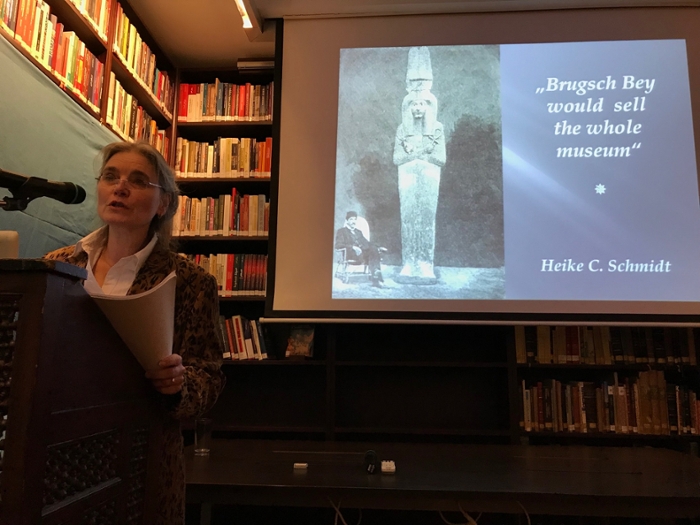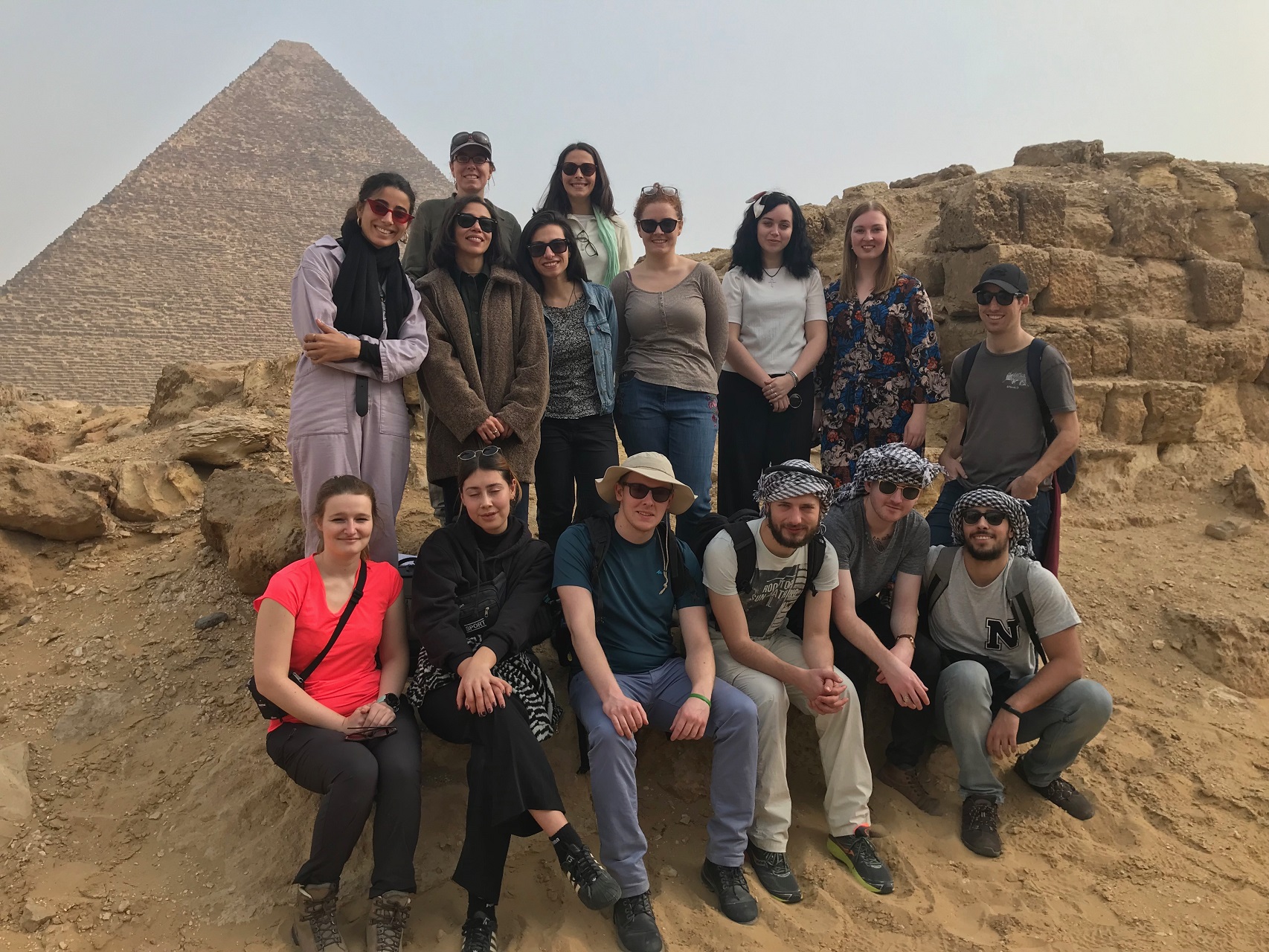Week 1: 8–11 January
While our first week in Cairo did not officially begin until the 8th, most of us were already in Egypt by the 4th, which was great in terms of getting to know each other. By the time the program actually started, the uneasiness of not knowing all of our colleagues had mostly faded, and we just went everywhere together as if we were one large family.
The first day began with the NVIC director, Rudolf de Jong, personally welcoming us to the Institute, followed by a quick introduction to the basics of life in Egypt by the librarian, Tine Lavent. After getting an idea of what these two months would be like, Marleen De Meyer took us on a bus tour through Cairo while being our "tour guide".
Thanks to that, we all got out of our bubble in Zamalek and discovered the "real" Cairo, a bustling city where multiple cultures and religions coexist in what I can only describe as a "chaotic harmony". I’d say the highlight of this tour was our stop at the Muqattam cliff, where the city of Cairo could be seen in all its splendor, emerging from the fog (Fig. 1). The day ended with a group dinner at the Abou el-Sid restaurant in Zamalek, where we all got to try some Egyptian food, which everyone enjoyed.

On the second day we got our first taste of Egyptian Arabic right in the morning with a lovely lecture by Khawla, which will hopefully get us a bit closer to being able to fully communicate with the Egyptian community, il-ḥamdu li-llāh. Then, Marleen took us through the Swiss and German Institutes, where we learned a lot about their peculiar shared history, as well as about their current research projects (Fig. 2).

During the afternoon, we had a quick briefing session about the upcoming excursions to the Delta and to Luxor, and we ended the day with a very interesting lecture by Heike Schmidt about Emil Brugsch, a controversial figure who "would sell the whole [Boulaq] museum" if given the chance, according to his contemporaries’ opinion (Fig. 3)

Following a free day, the fourth and final day of the week was definitely the one we were most excited for, as it was the day on which we went to Giza and finally saw the pyramids. As if to add some suspense, the pyramids were covered in fog when we arrived, which made everything even more surreal. We got to enter several mastabas, as well as the pyramids themselves. However grand the pyramids may be (and they are), it is inside the mastabas that we see the most beautiful of resting places for the deceased, as they were all beautifully decorated – a stark contrast from the bare walls of the inside of the pyramids. For many of us Egyptologists in the making, this was the first time we were in contact with these amazing monuments, a day we will surely never forget (Fig. 4)
João Pedro Ramos Marques


